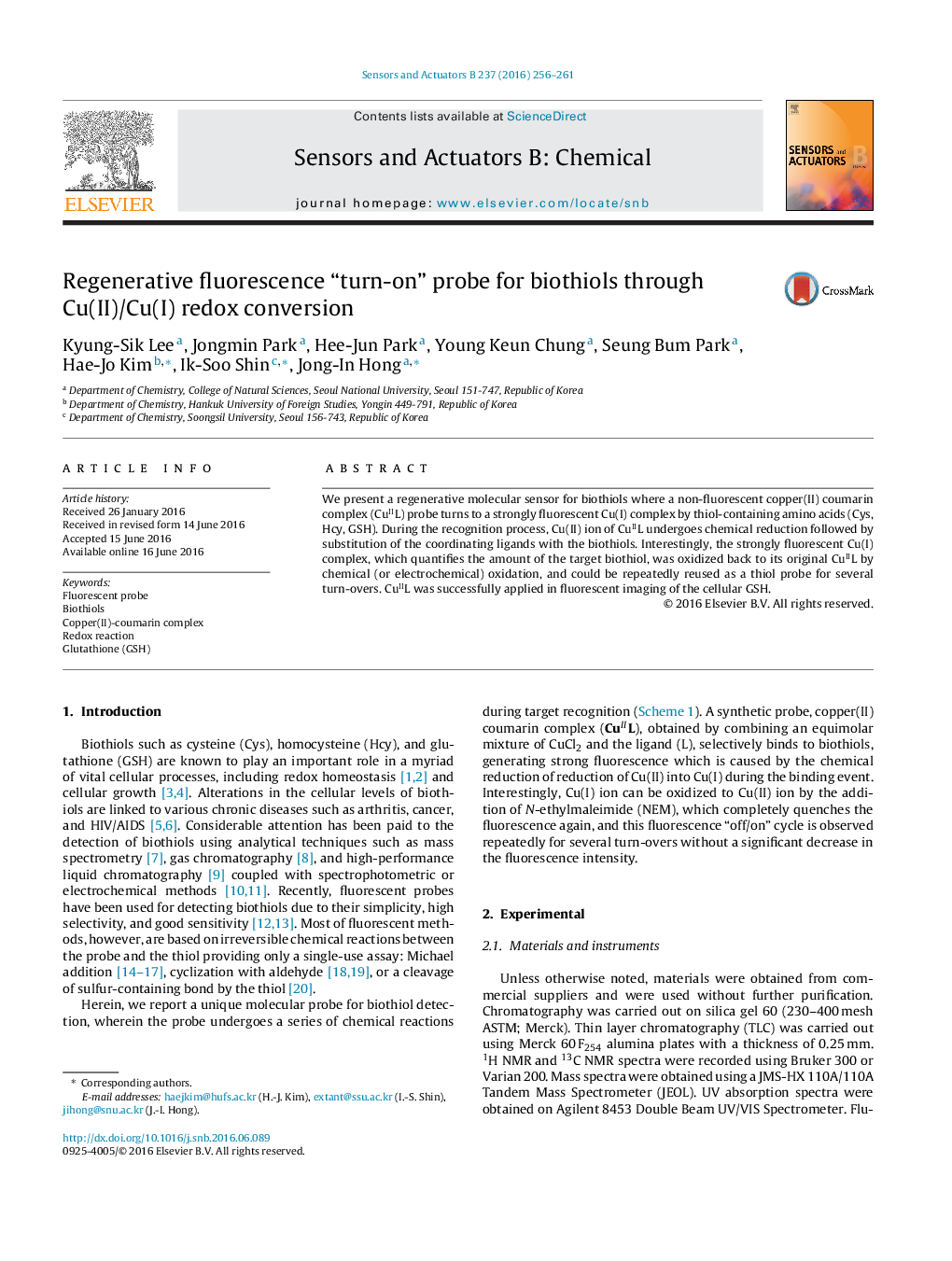| Article ID | Journal | Published Year | Pages | File Type |
|---|---|---|---|---|
| 742254 | Sensors and Actuators B: Chemical | 2016 | 6 Pages |
•We report a fluorescent “turn-on” molecular probe for biothiols where a non-fluorescent copper(II) coumarin complex turns to a strongly fluorescent Cu(I) complex by thiol-containing amino acids (Cys, Hcy, GSH).•The strongly fluorescent Cu(I) complex with biothiols can be returned back to its original probe form by chemical or electrochemical oxidation, enabling it reused as the thiol probe for several turn-overs.•The probe can be also successfully used in fluorescent imaging of the cellular GSH.
We present a regenerative molecular sensor for biothiols where a non-fluorescent copper(II) coumarin complex (CuIIL) probe turns to a strongly fluorescent Cu(I) complex by thiol-containing amino acids (Cys, Hcy, GSH). During the recognition process, Cu(II) ion of CuIIL undergoes chemical reduction followed by substitution of the coordinating ligands with the biothiols. Interestingly, the strongly fluorescent Cu(I) complex, which quantifies the amount of the target biothiol, was oxidized back to its original CuIIL by chemical (or electrochemical) oxidation, and could be repeatedly reused as a thiol probe for several turn-overs. CuIIL was successfully applied in fluorescent imaging of the cellular GSH.
Graphical abstractFigure optionsDownload full-size imageDownload as PowerPoint slide
